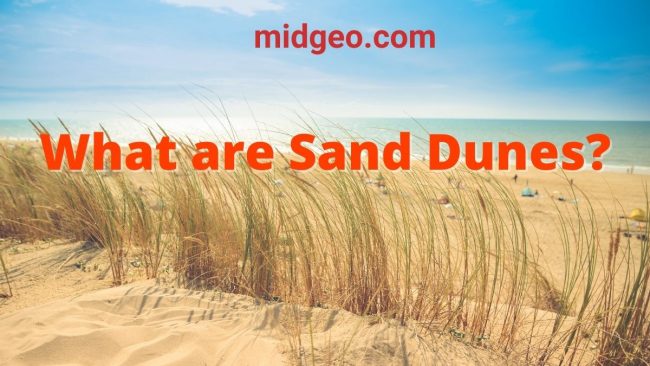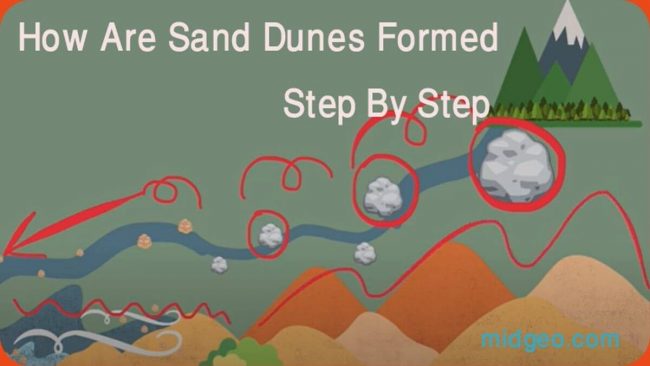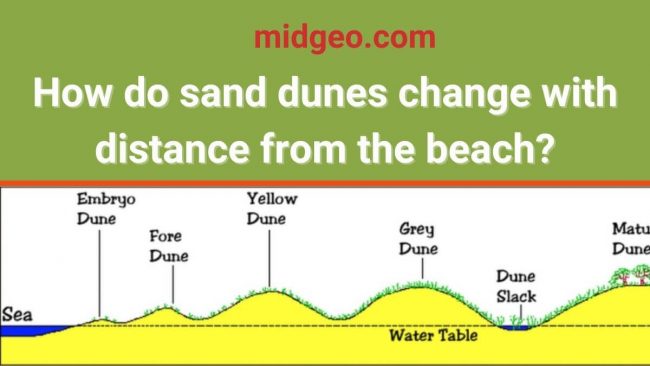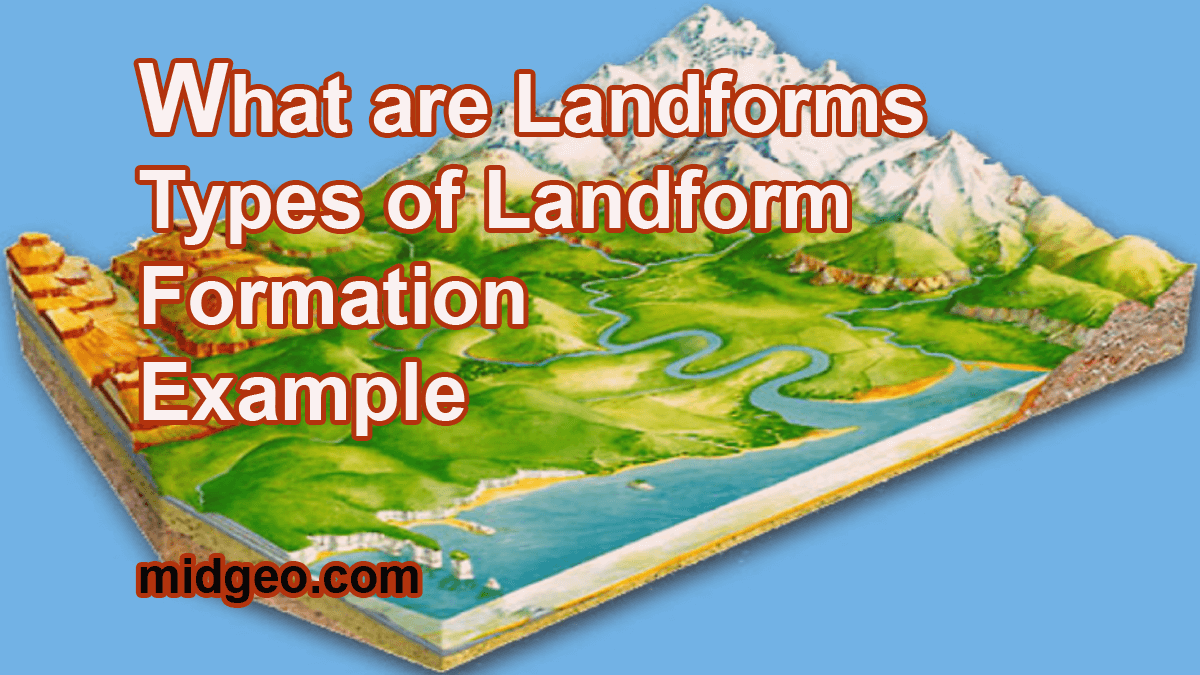
How are sand dunes formed? it’s a big question when we see The dune habitat which made up of millions of tiny pieces of sand that pile up to form hills. Some dunes can be over 50 feet tall. Now you’re probably wondering where exactly does all of this sand come from?
In order to understand how are sand dunes formed? We must first figure out what is sand dunes? it’s types and where does sand dunes formed?
What are Sand Dunes?

Many people think the sand comes from the ocean because these coastal dunes are right next to the beach. But would you be surprised to learn that the sand actually originates from a location hundreds of miles away from dunes.
A sand dune is an accumulation of sand consisting of wind, waves and sandstone erosion. Because Sand dunes rely on constant wind forces and water its structure is constantly changing.
What are sand dunes in geography?
Sand dunes are geographical features that lie between the ocean/shore.
In geography, a dune is a mound of sand that is built up either by wind or the flow of water. Sand dunes come in a variety of shapes and sizes and are generated when air or water interacts with them. As sand is driven up the dunes, most dune types are longer on the leeward side and have a shorter “slippery face” in the wind.
A valley, between the sand dunes is called a slack. An area of a “dune field” is covered with extensive sand dunes. Large sand dune fields are known as ergs.
Types of sand dunes
There are five basic types of sand dunes____
- Barches
Crescent-shaped hills are usually wider than tall. The sliding surface on the concave side of the dunes. Formed under winds blowing from one direction, these dunes are also known as barchan or transverse dunes.
2. Parabolic Dunes
Lots of sandy plate covered with vegetation.If strong winds destroy part of the vegetated sand a parabolic dune can form. Leeward motion occurs if sand from the eruption is deposited on the slope opposite the parabolic dune.
3. Seif
Seif Dunes formed under a wind regime where the two main directions are 90 degrees apart would only expand without lateral progress. Lateral progression occurs when a sliding face is formed across the entire lee side.
4. Longitutedinal Dunes
A large, elongated dune that runs parallel to the wind’s direction. The cross-sections of longitudinal dunes are frequently symmetrical. They usually form behind an obstacle when there is a lot of sand and the winds are constant and strong.
5. Transverse Dunes
Transverse dunes are tall sand dunes with a series of undulating ridges running their length. Dunes with a slightly sloping windward side and a sharply sloping transverse side are known as transverse dunes. They usually form in regions where there is little vegetation and a lot of sand. Transverse dunes make up the majority of beach dunes.
- 10 Importance of Geography in the World: Why Studying Geography Matters for Individuals and Nations
- World Environment Day 2025: Date, Theme, and Significance
- Relative vs. Absolute Location | Definition & Examples
How are sand dunes formed
Sand dunes need the following three elements to form them:
Place ( flat beach, desert ) – A huge amount of loose sand and area which has little vegetation.
Wind or air – to move the grains of sand.
An obstacle – to causes the sand lose momentum and stability.
Wind moves loose sand in three ways:
- Saltation – 94% of sand movement.
- Creep – 4% 0f sand movement.
- Suspension – 1% of sand movement.
How Are Sand Dunes Formed Step By Step?

You obiusly already know that sand dunes are shaped by wind. The silt in streams and lakes is protected as long as they are flowing and moist. When the silt in lakes or stream beds dries out, it is uncovered to the wind, and the particles are ready to go!
With an example I tried to explain how are sand dunes formed step by step .Hopefully it will be easier to understand.
Example “How Are Sand Dunes Formed?”
In California large mountains exist inland from the coast. These mountain ranges lay parallel to the Pacific Ocean and are formed by layers of cooled magma also known as “igneous rocks.” High up in these mountain ranges in central California, granite rocks and sandstone boulders dominate the landscape. Rivers and creeks are formed around these large rocks.
When it rains high up in the mountains, the strong force of the water flowing down the rivers causes the rock to erode into smaller rocks. “Weathering” is when these rocks get rained on the rain and the processes up in the creek turn these large rocks into slightly smaller rocks.
The smaller rocks then turn into smaller tinier rocks, and eventually as the process continues and as the creek winds its way down through the mountains and out onto the beach, you end up with tiny rocks known as sand.
The Pacific Ocean and as you know those rocks were broken up into tiny air pieces tinier rocks small sand particles. The sand particles are now washed out through the creek and in to the ocean.
Those sand particles then settled just offshore creating what’s known as “sandbars.” These sandbars sit in relatively shallow water and as the surf comes crashing up over the sandbars, tiny sand particles make their way back up on to the beach.
Read More….
MidGeo
What Reasons People Like Moses Lake Sand Dunes for Camping?
Now once that sand is on the beach, then it’s going to take a journey to up onto the coast to create the sand dunes. The sand particles continue to travel in the wind in an eastward on shore direction. The sand will continue to travel until it runs in to an obstacle.
The obstacle could be the shape of an existing sand dune and then the particle just ends up on it and keeps accumulating or it could be some of the vegetation. These vegetated areas are very important for the structure of these dunes because it gives it some stability sand is constantly in motion.
“Saltation” is the name of the process for sand being transported inland by the force of wind.While the sand is always in motion and the dunes are constantly shifting, large dunes are not created overnight. This process does take time and can even be measured on geological timescales!
How do sand dunes change with distance from the beach?

- Beach
- Embryo dune
- Fore dune
- Yellow dune
- Grey dune
- Dune slack
- Mature dune
Thanks for continue reading – How Are Sand Dunes Formed Step By Step? Stay with me for new article.





